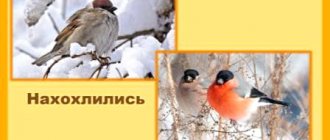List of migratory birds
There is also a wide range of warm-blooded vertebrate animals capable of flight that leave warm regions with the onset of cold weather. Most of them are familiar to everyone, or many have seen them at least in a picture.
Stately rooks
If you read the description of this bird, it will seem that we are talking about a raven. Indeed, these birds from the corvid class are very similar to each other. But, unlike their relatives, rooks are migratory birds. In ancient times, it was the arriving rooks that symbolized the imminent arrival of spring. They fly home the very first, as soon as a small thaw appears in the snow. An interesting fact about rooks is that the birds make themselves swings from branches to relax. They can swing on a homemade swing for a long time. Rooks are unpretentious in food, but despite this, they lead a migratory lifestyle.
Cute swallows
“A swallow flies towards us with spring in the canopy” - these lines from Pleshcheev’s children’s poem were not written in vain, since this bird is another messenger of the coming spring. But swallows are still conditionally migratory birds, it all depends on what climate surrounds them in the place of settlement. From Russia, they prefer to leave their homes during cold weather, since the air in winter is too cold for small birds. Swallows differ in their behavior:
- are not afraid of people;
- They build their nests directly on houses.
If this happens, then it is considered a good omen to have a swallow’s nest under your window. But swallows are also very beautiful and fast. Their flight speed is about 120 km/h. In the summer you can observe a very funny picture: when a huge flock of chicks learns to fly, the entire sky, not high from the ground, is strewn with black dots, which every now and then fall to the ground or wires in order to rest.
Song larks
One of the most songbirds. Their trills have been spreading since the end of March. Birds are so carried away by their singing that they forget to build a nest on time, and begin this activity much later than their fellow birds. Larks are unpretentious when it comes to food, so they eat whatever they can get. It is interesting that larks build their nests in secluded places, but not in trees. Their homes can be found in the thick of bushes, in the grass, even under stones.
Melodious nightingale
Well-known singers. It is rare to meet a person who, at least once in his life, on a quiet summer evening, would not indulge in daydreaming while the nightingale sings. Against the background of the rustling of leaves and the evening sunset, their trills sound even more romantic. Their beautiful voice compensates for their modest appearance, since these birds are small with nondescript coloring . The predominant colors are:
- dark brown;
- grey;
- brown;
- black.
In winter, they fly to more southern regions of the planet.
Unlike their feathered counterparts, nightingales fly home quite late - at the end of May. By the way, the male nightingale entertains the female with his singing while she lays and incubates eggs. They are very secretive and cautious, so you rarely get to see them.
Copycat starlings
Capable of reproducing various sounds, including the meowing of a cat. Looking at the images of the starling, you can understand from its variegated color that it is a joker who fakes the voices of his relatives . Depending on their habitat, they are conditionally migratory. They fly a large number of kilometers to rest in the winter and return to their homeland in the spring.
It happens that the cold has not subsided, but the birds have already returned, then it is very difficult for them, sometimes the weakest die. Residents of warm countries are not at all very fond of starlings for their huge clusters and loud chirping. Due to their large accumulations, they often cause damage to crops and berries. But still, starlings bring more benefits for exterminating pests. People make birdhouses for them, and the birds happily hatch their eggs in them.
Long-legged stork
This is such a curious character that he even became the hero of Bianchi’s story “Who Sings What.” Externally, it is a huge bird that amazes with its majesty. Representatives of this species build large nests on the roofs of houses and water towers. Storks are monogamous and choose a mate for life. In the summer they stay in pairs, and in the winter they gather in large flocks and fly south. The amazing thing is that during the flight the bird even manages to rest a little . The sleep is not long, about 15 minutes, but it is enough to continue the long journey. Upon returning home, they return to their ancestral nests, sometimes the homes are inherited. The stork's main delicacy is frogs, which is why birds choose wetlands as places to live.








